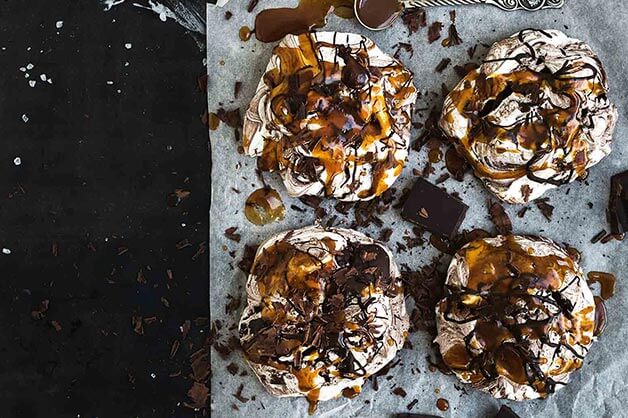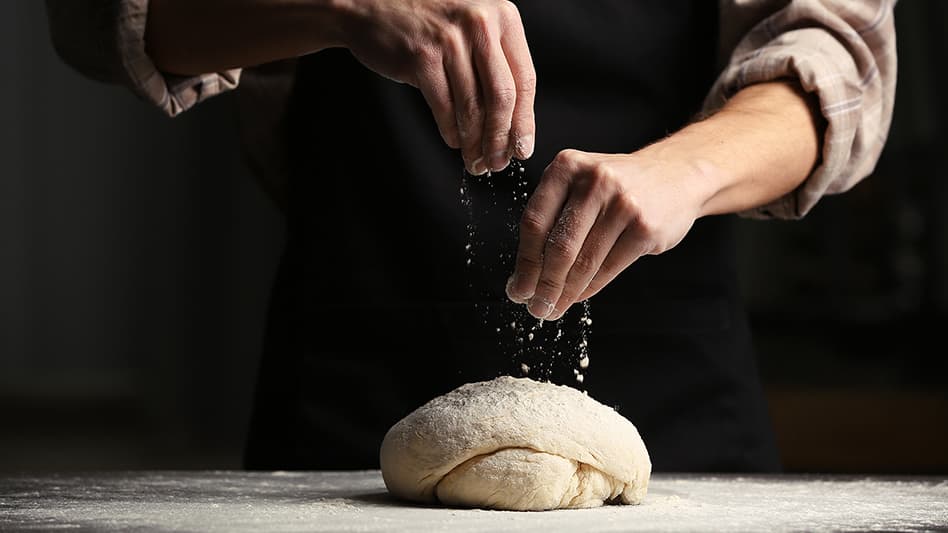Be inspired with recipes created by chefs.
Sign up for updates about products, special offers, news and promotional materials from Goodman Fielder.

Summary
Culinary delights are a multi-sensory experience – but just how important is plating and colour considerations?
Hospitality veterans are likely to be acquainted with the highs and lows of the fashions in food presentation over the decades. Chefs have long been pioneers of dining as a multisensory experience, experimenting with the look of their dishes to make them as appealing to the eye as they are to the stomach.
While it’s difficult to see how the miniature skewered canapes of the seventies or the parsley and tomato rose garnishes of the eighties came to represent the pinnacle of an alluring dish, we can appreciate that chefs of the era paved the way for others to experiment with shape, form and flavour. Thankfully, the noughties brought with it a pared back elegance in food presentation but diners are hungrier than ever for drama on the plate. Chefs have responded with “magic” emulsions, poured with flair at the table, paired with unexpected tableware, like black slate tiles, vintage jam jars and miniature frying baskets overflowing with thrice-cooked chips.
But does plating actually have any effect on the way diners experience a dish or are we now investing in futuristic backlit platters for nothing? Science has the answer.
It turns out chefs’ instincts have been right all along. Research in the Journal of Sensory Studies has shown that the containers from which we eat and drink can influence our perception of the food and beverages we consume and can also affect our overall “consumption experience”. In the experiment, participants were served hot chocolate from a vending machine in four different coloured cups; red, orange, white and dark cream. They were then asked to rate each sample on a number of sensory scales. The results revealed that the orange and dark cream cups enhanced the chocolate flavor of the drink and consequently improved people’s enjoyment of the beverage. Interestingly, the hot chocolate consumed from the dark cream cup was also rated by participants as sweeter and its aroma more intense.
Separate tests revealed that diners believed strawberry mousse tasted sweeter and more intense when served on a white plate and lemon-based beverages were “more refreshing and lemony” when served in a blue cup, while they were perceived as being sweeter when served in a pink cup. Coffee, too, is affected by the phenomenon; it was found to taste stronger and more aromatic in a brown cup, weaker in a red cup and smoother in a blue one.
The bad news for chefs is there’s no hard and fast rule to tell which colour enhances what food. The good news is that the effects of the eyes (and ears and nose, for that matter) on our taste perceptions are real. The lesson to take away is we should continue to strive to make dining an experience that piques all the senses for maximum consumer engagement.

The study of how the brain responds to the way a meal is prepared and served is referred to as neurogastronomy. Made famous by the likes of Heston Blumenthal, the movement is based on the premise that 80 to 95 per cent of what we think of as flavour actually comes from what we smell, hear, feel and see. Neurogastronomists are asking whether seafood tastes saltier when accompanied by sounds of the sea and if a dessert is made more pleasurable if it looks like a Kandinsky painting, painted directly onto the tabletop by the Chefs. Then they’re using modern technology, like brain scans, to get definitive answers. Restaurant owners don’t necessarily have to go down the path of weird, wacky and experimental cuisine to create dining experiences that flick the pleasure switch in clients’ brains. The scientific principles of neurogastronomy can be successfully applied in any kitchen.
Consider how you could tweak these elements in your dining room.
Cutlery and Crockery:
The weight of crockery and cutlery is has been shown to be key to diners’ perception of the quality of food. Diners reported greater enjoyment of the meals when eaten with heavier knives, forks and plates. Yoghurt eaten with a silver spoon “tastes” more expensive and creamier than when eaten with lightweight cutlery. Likewise, the materials used in cutlery are important. Some metallic elements in utensils actually affect the taste of food. British scientists have found that silver knives, forks and spoons have an unpleasant taste on their own, plus they react badly to the acid in fruit and the sulphur in eggs. Sour foods work well with zinc and copper utensils because the acids in them literally strip a bit of metal with every spoonful.
Sonic Seasoning:
Would you enjoy a plate of dessert if you were being overwhelmed by the sound of a scratchy violin? Conversely, is your day made memorable when your favourite song unexpectedly plays on the radio? Piping pleasant music, at a comfortable level, into your dining room can pique diners’ senses and help them to experience a dish at a heightened level. Studies in the Journal of Chemosensory Perceptions have shown that high notes, like the soft tinkling of a piano, brings out the sweetness in a dish, while low pitched, brassy sounds enhance bitter notes, like the rich coffee and dark chocolate flavours in mousse.
Sort Out Your Colour-Flavour Correlations:
Have you ever taken a spoonful of strawberry mousse only to find it’s salmon sorbet? You may have enjoyed the salmon sorbet has you known what it was before sampling it, but having your taste expectations dashed instead made for a negative dining experience. The Flavour Journal has studied how colour clearly conveys to the brain what taste is to be expected. The basic tastes of sweet, sour, bitter and salty are systematically associated with particular colours. This phenomenon is more complex than just pairing yellow with lemon flavour because lemons are yellow; the pairings are often unrelated to such basic sensory features. At a basic level, there appears to be a correlation between red and sweetness, yellow and sourness, white and saltiness and green and black and bitterness.
Perfect Plating:
Chefs’ age-old pursuit of visual balance and beauty on a plate has not been in vain. The plating of a dish has been shown to alter diners’ enjoyment and perceived flavour of the meal. Central plating appears to be more appealing to diners than artful asymmetric designs and the orientation of particular elements also affects the perception of the dish. Odd numbers of elements tend to be more appealing than even numbers and dishes that incorporate a broad palette of colours will be better received than monochrome ones.
Read More:
Interested in what a restaurant looks like when it dives right into multisensory dining? These are the best in the world.
Related Ideas
7 Ways to Survive Service in the Festive Season
Here are our tips, straight from the chef's mouth, on how to survive the festive season in the kitchen
A Chef’s Guide to Gluten Free Baking
Want to know how to turn your bakery goods into a gluten free delight? Check out our gluten free baking guide now.



